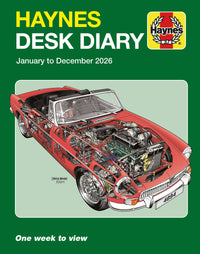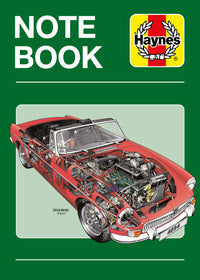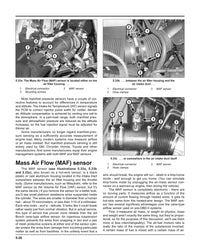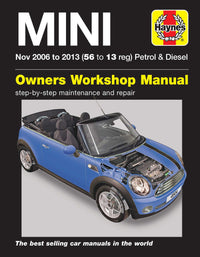The Ford Focus has been with us in one guise or another since 1998. Yet unlike other cars to feature in our spotter's guides, it's only gone through four generations.
And that's probably because year after year, Ford has got it absolutely spot on with the Focus. It's a brilliant car from bumper to bumper. It can do anything, and it does it in comfort and with more than enough space for you and the family.
The Focus had the odds stacked against it when it was new, though. It had to take over from the Escort, a car that had earned the Blue Oval a lot of criticism because of it being so poorly built, and very boring to look at/own/drive/stand near/talk about. It was a horrid car.
So horrid that people really didn't think Ford had it within itself to build something better. The car maker had other ideas, though, and well and truly knocked it out of the park.
Check out our wide range of Focus manuals, in both digital and print

Mk1 Ford Focus (1998 - 2005)
The Escort was hated by everyone other than your grandparents. The rival companies like Volkswagen and Vauxhall had brilliant mid-size family cars on the market.
Ford had to step up and bring something new and exciting to the table. It didn't. Instead, it drove through the table, then around it, then over it. The Blue Oval gave us the Focus.
The Escort was a soft, squidgy-looking thing. You could tell it was an old car with some faintly re-worked panels in a bid to keep it something like relevant. The Focus was the direct opposite.
It was a product of the company's 'New Edge' design language, which was a million miles away from the old Escort. It was full of bold, sharp lines. It looked like nothing else on the road. It had presence. So much so that it was awarded European Car of the Year in 1999.
It didn't just win on looks, though. It was also astounding to drive. Other cars in this class were still using torsion or fixed beam rear suspension.
Ford binned that idea and instead gave the Focus independent rear suspension, meaning it held the road like a champ. Even the little 1.4 was a riot to drive thanks to that amazing chassis.
As the Mk1 slowly disappears from our roads, it's going to become a modern classic. To spot one, you're looking for a sleek 'half moon' body with a sharp front end housing large, triangular headlights. The rear had tall, thin lights that went up to the roof, and all Focus models had body-coloured bumpers.
Buy the Haynes manual for the Mk1 Focus

The Hot One
It wouldn't be a Ford if there wasn't a hot version. The Mk1 model was the car that brought the famous Focus RS (Rallye Sport) name back from the dead, and with some flair, too.
The Mk1 Focus RS was a fire-breathing 2.0 turbocharged, 210bhp animal with push-button start, Sparco seats, Brembo brakes and a very, very good Quaife limited-slip differential. It's now a true classic, with prices climbing.
Focus fact: The Focus was nearly called the Escort, which may have been catastrophic. Ford couldn't use Focus until a legal dispute had been settled, which it was, at the 11th hour.

Mk2 Ford Focus (2004 - 2011)
The Mk2 Focus carried over the same winning chassis setup from the Mk1, but stretched it to fit a bigger body. It was 25mm longer in wheelbase, 168mm longer overall and 8mm taller than the first car.
That was a good thing, because it meant buyers and their families had more space inside, ensuring the Focus remained a sales favourite.
The styling was changed to match that of the Mondeo and Galaxy of the time, so the hard and sharp edges were replaced with a more conventional family hatchback look.
Richard Hammond famously criticised it for looking a bit dull, but It still looked great and very well.
A new range of engines, including more refined diesel units than those of the first Focus, made it a hit with company car buyers, too.
To spot a Mk2 Focus, you're looking for a car that's a bit more traditional-looking. You can spot it easily enough, though, thanks to the big headlights that pull back up into the bonnet edges.
The rear lights are still high on the car and run the length of the C-pillar. Also look for the side windows and the little 'kick' up right at the rear. A dead giveaway.
The Mk2 got a facelift in 2007 (the white car with blue stripes at the top of the page), which added creases to the bodywork and brought new headlights, helping to add a bit more interest to the overall look.
Buy the Haynes manual for the petrol Mk2 Ford Focus
Buy the Haynes manual for the Mk2 Focus diesel

The Hot One
You might think we're going to talk about the ST here, but we're not. The ST was a wonderful, fast family hauler, but as we all know, it's the Mk2 RS that we really want.
The 2.5 five-cylinder turbocharged engine (shared with Volvo) put a phenomenal 300bhp through the front wheels, thanks to a revolutionary new suspension set-up called the 'RevoKnuckle', along with a torque-biasing limited-slip differential. It would go on to 163mph if you were brave enough. The ST also got the same engine, albeit detuned to put out 221bhp.
Focus fact: In 2008 Jari-Matti Latvala became the youngest driver to ever win a rally. His car? A Ford Focus WRC of course!

Mk3 Ford Focus (2010 - 2018)
The third-generation Focus was quite literally a global phenomenon. Prior to this, the Focus available in North America was a different car to the one available in Europe. The Mk3 changed all that by being built in factories around the globe to the same basic specification.
It was also built to Ford's Kinetic Design philosophy, which meant it was once again a striking and adventurous take on the humble family car.
Again, it grew bigger than the previous generation, but it still retained the class-leading independent rear suspension. The third Focus also brought with it a range of new engines, including a direct-injection inline four-cylinder and also a super economical 1.0 three-cylinder turbocharged unit, badged Ecoboost. However, despite winning Engine of the Year several times, the latter is renowned for having issues with its timing belt, which is lubricated by the engine oil (hence being known as a wet belt). If the oil isn't changed on time, the belt can wear prematurely. The belt-replacement job is a lengthy one, too - your Haynes manual will show you how to do it.
There was also a new double-clutch automatic transmission by the name of PowerShift. Frustratingly for Ford, it was plagued with problems and as such, there was many a lawsuit. Thankfully, the issues have been ironed out now.
To spot one, you're looking for a wide, low, long car. The trademark 'kick' in the rear side windows remains, though the rear lights have moved to a position lower on the back of the car. The front lights are longer, but also thinner, giving the MkIII Focus a more chiselled look.
The Mk3 Focus was facelifted in 2014, with changes made largely to the front end, with slimmer headlights and a revised grille and bumper, as seen in the photo below.
Buy the Haynes manual for the Mk3 Focus

The Hot One
Again, Ford gave us an RS version, and again, it was a proper animal. It might have lost a cylinder, returning to four within its 2.3 turbocharged engine, but it gained a significant amount of horsepower.
The current Focus RS boasts an impressive 345bhp, which would be far too much for the front tyres, so Ford made it all-wheel drive. And with it, they added a 'drift' mode, so you can slide it around like a proper hooligan!
Focus Fact: In the planning stages, the young designers used what's called the Third Age Suit in order to simulate the physical limitations of an elderly person. That way they could be sure the Focus would work for everyone.

Mk4 Ford Focus (2018 - 2025)
All good things come to an end, and the Mk4 Focus is the final version, with sales ending in 2025. A travesty, if you ask us, in the same way that axing the Fiesta and Mondeo was. But crossovers and EVs are de rigeur, apparently.
The Mk4 Ford Focus made its debut in September 2018, with various versions of the 1.0-litre (84bhp, 99bhp and 124bhp) and 1.5-litre (148bhp and 179bhp) petrol Ecoboost engines. The 'wet' cambelt (see the Mk3 Focus, above) had been replaced by a chain, which is good. Less good is that the oil pump is driven by a wet belt, so regular oil changes (at least once a year/12,000 miles but preferably every six months/6000 miles) are essential.
There were also two versions of a 1.5-litre diesel engine, plus a 148bhp 2.0-litre unit.
The hot ST arrived in 2019, with 276bhp from the 2.3-litre petrol engine and 187bhp from the 2.0 EcoBlue diesel motor.
In 2020, the 1.5-litre Ecoboost was replaced by a 1.0-litre mild hybrid with 124bhp or 153bhp.
Sadly, Ford confirmed that there wouldn't be an RS version of the fourth-gen Focus.






























